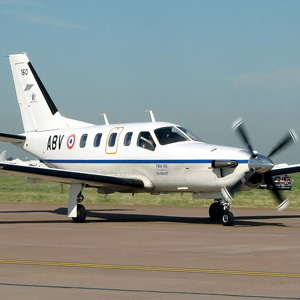Unresponsive Plane Crashes Off The Coast Of Jamaica, Might Have Been Victim Of Hypoxia
A small unresponsive plane crashed into the water off the coast of Jamaica after a 1,700 mile journey that the pilot may not have been in control of. The personal jet left from the Great Rochester International Airport in New York and according to the flight plan registered with the FAA, was originally destined for Naples, Florida.
The plane was a single-engine turboprop Socata TBM700 and owned by prominent Rochester real estate developer Larry Glazer who was also flying the plane. Glazer was a licensed and experienced pilot—he was the president of the TBM Owners and Pilots Association—as was his wife Jane, who was also onboard along with their son.
Were Unresponsive Plane Crash Victims Exposed To A Depressurized Cabin And Hypoxia?
Rick Glazer, Larry and Jane’s older son, refused an extended comment on the matter, saying that at this time so little was known. He did note, however, that his parents were both careful, safe, and experienced pilots. While still little is known, the FAA reported that in his last communication, Glazer told the Tower that something "was not correct" and requested permission to descend. Not long after that all communication was lost.
Depressurization
Cases in which pilots have become unresponsive—leading to the plane drifting until crashing—is increasingly uncommon. There have been only a handful of these incidents over the last two decades. In most cases the cause is either the pilot become suddenly incapacitated (a heart attack or stroke for instance), or, in the more likely case, there is insufficient cabin pressure in the plane. If the cabin pressure is too low there will not be enough oxygen to breathe and those in the plane will soon pass out.
Causes for this a few as well. Most pilots are taught to check the pressure before taking off; there are cases in which pilots have forgotten and other instances where the pressurization levels were improperly set. Mechanical problems may also be to blame. If the plane suffers damage to the windows or to the fuselage, air will rapidly escape to the point where a pilot would have only seconds to react before he loses consciousness.
When cut off from oxygen, the human body can quickly develop Hypoxia; currently, this is the theory as two what happened to the Glazer’s plane.
What is Hypoxia?
Glazer stopped communicating with air traffic control as his plane drifted up to 25,000 feet. When US fighter jets scrambled to intercept the plane as it was crashing into the ocean, Air Force pilots were unable to get a visual indicator on anything going on inside the plane. The wings were frosted in ice, as were the windows. Given the height that the plane had moved up to and Glazer’s inability to respond to the Tower, the working theory is that the sudden altitude changes may have been the cause of the hypoxia or could have been further catalyzed by the escaping air pressure.
Hypoxia sets in when parts of the brain aren’t exposed to an adequate amount of oxygen. The effects are strange, something almost intoxicating; those suffering from it often feel lightheadedness, unpredictable behavior and poor judgment. The feeling is similar to being deeply drunk—the FAA has often warned commercial and non-commercial private pilots of the danger of hypoxia and given them symptoms to watch out for. In the past, the FAA has urged non-commercial pilot to undergo high altitude flight physiology training to properly identify and deal with possible hypoxia and what could be done in the few minutes they have to save themselves and the people flying with them.
RELATED ARTICLES
Get the most-revealing celebrity conversations with the uInterview podcast!








Leave a comment